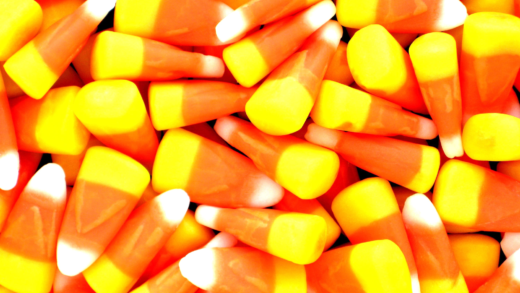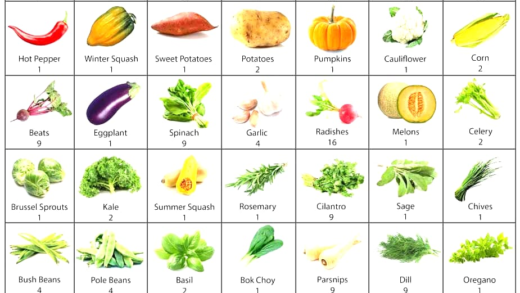Plant and animal cells share many similarities, such as the presence of a cell membrane, nucleus, and mitochondria. However, they also have key differences, including the rigid cell wall and chloroplasts in plant cells versus the flexible membranes and lysosomes in animal cells. Vacuoles in plant cells are large and central, while those in animal cells are smaller and more numerous. Lysosomes are more prevalent in animal cells, aiding in waste removal. The shapes of plant cells are generally rigid and rectangular, while animal cells have varied shapes suited for their functions.
Similarities Between Plant and Animal Cells: Let’s Explore What Makes Them Alike
Plant and animal cells share several key features that highlight their similarities. Both types of cells are eukaryotic, meaning they contain a nucleus and other organelles enclosed within membranes. This organization allows them to perform various functions essential for life.
- Cell Membrane: Both plant and animal cells have a cell membrane that regulates what enters and exits the cell.
- Nucleus: The nucleus houses DNA, which contains the genetic instructions for cell functions and reproduction.
- Cytoplasm: This gel-like substance fills the cell and is where many cellular processes occur.
- Ribosomes: Present in both cell types, ribosomes are responsible for protein synthesis.
- Mitochondria: Known as the powerhouse of the cell, mitochondria generate energy through respiration.
These similarities illustrate that both plant and animal cells have evolved to perform essential life functions despite their differences.
Key Differences: What Sets Them Apart?
While plant and animal cells have much in common, they also have distinct differences that serve specific functions. Understanding these differences helps clarify how each type of cell contributes to the organism’s overall function.
- Cell Wall: Plant cells have a rigid cell wall made of cellulose, providing structural support. In contrast, animal cells lack this feature and have a more flexible membrane.
- Chloroplasts: Only plant cells contain chloroplasts, which are essential for photosynthesis, allowing plants to convert sunlight into energy.
- Shape: Plant cells typically have a rectangular shape due to the cell wall, whereas animal cells have varied shapes based on their functions.
- Vacuoles: Plant cells usually have a large central vacuole for storage and maintaining turgor pressure, while animal cells have smaller vacuoles.
- Lysosomes: More prevalent in animal cells, lysosomes contain enzymes for digestion and waste removal.
These differences highlight the unique adaptations that enable plant and animal cells to thrive in their respective environments.
Unique Organelles in Plant Cells: What Do Plants Have That Animals Don’t?
Plant cells possess several unique organelles that are not found in animal cells. These organelles play critical roles in the functions specific to plants.
- Chloroplasts: As mentioned, chloroplasts are vital for photosynthesis, allowing plants to harness solar energy.
- Cell Wall: The rigid cell wall not only provides structure but also protects against physical damage and pathogens.
- Central Vacuole: This large vacuole maintains cell turgor, stores nutrients, and aids in waste disposal.
These organelles are essential for plant survival, enabling them to produce their food and maintain structural integrity, which is critical for their growth and development.
Unique Organelles in Animal Cells: What’s Exclusive to Animals?
Animal cells have several organelles that are unique to them, enhancing their specific functions. Unlike plant cells, which have chloroplasts and a rigid cell wall, animal cells are equipped with certain structures that aid in their survival and efficiency.
- Lysosomes: These are often called the “digestive system” of the cell. They contain enzymes that break down waste materials and cellular debris, ensuring the cell remains clean and efficient.
- Centrioles: Centrioles play a crucial role during cell division. They help organize the microtubules that separate chromosomes, ensuring that each new cell gets the right number of chromosomes.
- Small Vacuoles: While both plant and animal cells have vacuoles, animal cells have smaller ones. These vacuoles store various substances and help maintain osmotic balance within the cell.
These organelles demonstrate how animal cells have adapted to their environments, focusing on mobility, energy consumption, and waste management.
The Role of Chloroplasts: Why Are They Essential for Plants?
Chloroplasts are unique organelles found in plant cells, crucial for the process of photosynthesis. This process allows plants to convert sunlight into energy, which is fundamental for their growth and survival. Chloroplasts contain chlorophyll, the pigment that gives plants their green color and absorbs light energy.
- Photosynthesis Process: During photosynthesis, chloroplasts capture sunlight and use it to convert carbon dioxide and water into glucose and oxygen. This not only fuels the plant but also releases oxygen into the atmosphere, benefiting all living organisms.
- Energy Storage: The glucose produced can be stored as starch, providing energy reserves for the plant during periods of low light.
Without chloroplasts, plants would be unable to produce their food, ultimately affecting all life forms that depend on plants for oxygen and nutrients.
Rigid Cell Wall vs. Flexible Membrane: Why Do Plants Need That Wall?
The rigid cell wall in plant cells serves multiple essential functions, setting them apart from the flexible membranes of animal cells. This structure is primarily composed of cellulose, which provides strength and support.
- Structural Support: The rigid cell wall gives plants their shape and protects them from mechanical stress. It allows plants to grow tall and withstand various environmental conditions.
- Protection: The cell wall acts as a barrier against pathogens and harmful substances, enhancing the plant’s defense mechanisms.
- Water Regulation: The cell wall helps maintain turgor pressure, which is vital for keeping plant cells firm and upright. This pressure is crucial for the overall health of the plant.
In contrast, animal cells, with their flexible membranes, can change shape and move more easily, which is essential for their various functions in a dynamic environment.
Vacuoles in Plant and Animal Cells: What’s the Difference?
Vacuoles in plant and animal cells serve different purposes, highlighting the unique adaptations of each cell type. Plant cells typically contain a large central vacuole that plays several critical roles. This vacuole is filled with cell sap, which helps maintain turgor pressure, providing structural support to the plant. In addition, it stores nutrients, waste products, and helps in the breakdown of complex molecules.
- Storage Function: The large central vacuole acts as a storage unit, holding water, ions, and other substances necessary for the plant’s growth and metabolism.
- Turgor Pressure: It helps maintain the rigidity of the plant cell, ensuring the plant remains upright and can withstand external pressures.
- Waste Disposal: The vacuole can isolate harmful materials, ensuring they do not interfere with the cell’s functioning.
In contrast, animal cells contain smaller vacuoles that are more numerous and varied in function. These vacuoles are involved in processes such as storage, transport, and waste management.
- Smaller Size: Animal cell vacuoles are smaller and more numerous, reflecting their different storage needs compared to plant cells.
- Role in Transport: They can help transport materials within the cell and assist in the removal of waste products.
Overall, while both plant and animal cells utilize vacuoles for storage and waste management, the size, number, and specific functions of these vacuoles differ significantly between the two cell types.
Lysosomes in Animal Cells: Why Are There More?
Lysosomes are membrane-bound organelles filled with enzymes that play a crucial role in the digestion and waste removal processes within animal cells. These organelles are often referred to as the “clean-up crew” of the cell, breaking down waste materials, cellular debris, and even foreign invaders like bacteria.
- More Prevalent: Animal cells typically have a higher number of lysosomes compared to plant cells. This is primarily due to the different metabolic demands and waste management needs of animal cells.
- Enzyme Activity: Lysosomes contain various enzymes that can digest proteins, lipids, carbohydrates, and nucleic acids, ensuring that animal cells can efficiently recycle and reuse cellular components.
- Autophagy: They are involved in autophagy, a process where the cell removes damaged organelles, thus maintaining cellular health.
In contrast, plant cells generally have fewer lysosomes, as they rely on vacuoles for many similar functions. This difference illustrates how animal cells are adapted for more complex and dynamic environments, where rapid breakdown and recycling of materials are essential.
Shapes of Plant and Animal Cells: How Do They Differ?
The shapes of plant and animal cells are influenced by their structural components and the functions they perform. Understanding these differences can provide insight into how these cells interact with their environments.
- Plant Cells: Typically, plant cells have a rigid, rectangular shape due to the presence of a cell wall. This shape is crucial for providing support and maintaining the plant’s structure as it grows.
- Animal Cells: In contrast, animal cells exhibit a variety of shapes, ranging from round to irregular. This variability allows them to perform specialized functions, such as movement and communication.
- Functionality: The shape of a cell often reflects its function. For example, nerve cells are long and branched to facilitate communication, while muscle cells are elongated to allow contraction.
In summary, while plant cells generally maintain a consistent shape due to their cell wall, animal cells display a wide range of shapes that enable them to fulfill diverse roles within an organism. This structural difference is a key factor in the distinct functions of plant and animal cells.





Comments are closed.